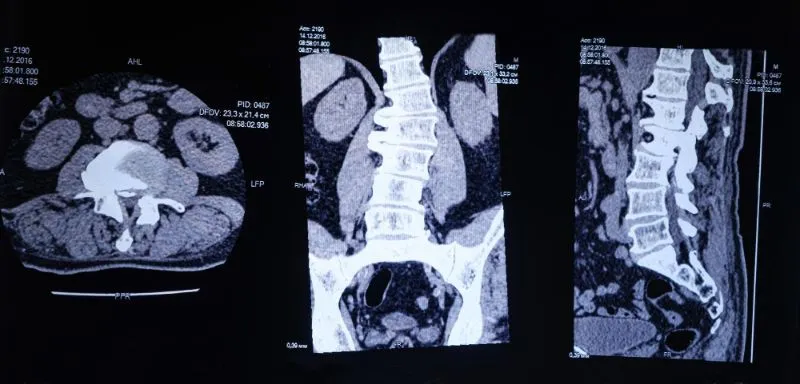A direct relationship between hip fractures in the United States population and age has been established. Furthermore, fractures and hip pain are usually seen in older demographics in the US and everywhere globally.
Every year 300,000 people are hospitalized for hip-related trauma (predominantly fractures), and over 60% of hospital admissions are of people over 65. In addition, older women are more likely to complain of hip (and other osteologic) complaints.
The underlying cause of hip pain can vary from direct and indirect trauma to tumors and infections. Therefore, a physician must make a correct assessment of what's causing the pain and deduce a treatment plan for relieving it. Any delays in formulating an appropriate treatment plan can lead to dire consequences.
For example, arthritis caught on early can be managed or relieved with appropriate rehabilitation and medications. Surgeries might become necessary, however, if the diagnosis is incorrect because of improper imaging.
Benefits of Hip MRI
Radiology refers to the branch of medicine that deals with imaging internal bodily functioning and systems. Hip, For example, imaging is instrumental in diagnosing pathologies and traumas to the ilium, sacrum, lumbar spine, associated muscles, and soft tissues.
Multiple images of the hip are necessary for a correct diagnosis and for creating an adequate treatment plan. This includes:
- Wide-field imaging view for the hip, sacrum, and ilium.
- Specific images afterward of individual affected sites.
Magnetic Resonance Imaging (MRI) is one of the most sensitive tests for examining and diagnosing bone and surrounding soft tissues. In addition, MRI tests can detect stress fractures, mild tissue trauma, and infections.
Pathologies of the Hip
- Osteoarthritis of the hip: arthritis commonly associated with old age and menopause
- Labral tears of the hip
- Fractures of the hip
- Tendonitis or Trochanteric Bursitis
- Femoroacetabular Impingement
Magnetic Imaging for Osteoarthritis
Osteoarthritis is a complicated condition of multi-factorial origin. The underlying characteristic is the breakdown of the hyaline cartilage along articulating joints. The epidemiology is usually in older demographics (typical women after menopause).
Diagnosing osteoarthritis is often done via radiographs and imaging modalities such as MRIs and X-rays. These techniques are non-invasive (unless contrast dyes are used) because of their low costs, quick results, and accuracy. An MRI is considered the gold standard for hip OA between MRIs and radiographs since articular cartilage is visible and has a much higher resolution of surrounding tissues. Multiple criteria are used for OA, including numerous clinical prediction rules incorporating limited hip internal rotation, hip pain with specific activities, and stiffness in the morning for sixty minutes or less.
An MRI is a good tool for evaluating the many causes of pain that may surround the hip joint itself. For example, several tendons inserted around the hip can become inflamed or degenerated. Likewise, bursitis can be painful, usually located at the hip's outside (lateral) part. In addition, if you have had a recent injury or engaged in excessive athletic activity, your muscles can become injured (known as a "muscle strain"), and an MRI can detect this.
An MRI often shows unexpected causes of hip pain originating from other nearby structures like the sacroiliac joints, pubic bones, or even the lower lumbar spine.
More worrisome sources of pain that could be coming from tumors, infection, or necrosis of the bone (also known as AVN) can also be eliminated from the list of potential causes by doing an MRI. MRI evaluates some of these causes with intravenous contrast.
How Much Does a Hip MRI Cost?
The average expense of an MRI in the United States is $1,325. However, costs can go from $375 to $2,850. One factor that can significantly influence the expense of an MRI is whether your insurance covers it. The payment for an MRI will be higher if you don't have medical coverage.
Another significant component that can extraordinarily influence the expense of an MRI is whether you have an in-patient office, similar to a medical clinic, or an outpatient medical procedure community. Outpatient clinics save you thousands on your hospital bill.
Different locations charge differently:
- MRI cost in Southern California: $225 - $800
- Cost Northern, Bay Area California: $450 - $1000
- Dallas, Texas: $656.25 - $1550
- Chicago - $350 - $1400
- Cost Hip MRI Florida: $300 -1275
When Would Your Physician Recommend an MRI?
Your physician would recommend an MRI for the hip if they suspect an underlying pathology inconsistent with the initial diagnosis. Likewise, if they suspect a tumor or an infection that can be dangerous or deadly.
You'll have cause to visit your regular care physician if the swelling doesn't go down, bleeding is uncontrollable, or you experience pain for longer than a reasonable time frame.
Our clinical experts continually monitor the health and medical content posted on CURA4U, and we update our blogs and articles when new information becomes available. Last reviewed by Dr. Tayyab S. Akhtar on May 11th, 2023.












